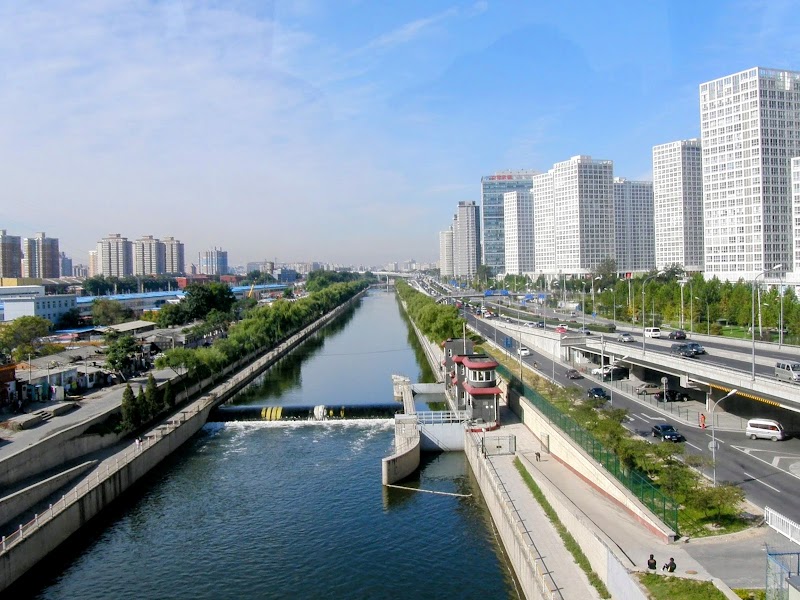Did you know that Denali National Park covers over six million acres of wild lands, an area larger than the state of New Hampshire? This magnificent expanse in Alaska is home to North America's tallest peak, Denali, and a range of awe-inspiring attractions like the Polychrome Pass and the Wonder Lake. Prepare to be captivated by the stunning landscapes, rich wildlife, and thrilling outdoor activities that make Denali National Park a prime destination for adventure seekers and nature lovers alike.
A visit to Denali National Park is like stepping into an epic wilderness saga. To help you navigate this sprawling narrative, a comprehensive tourist map serves as your guide, ensuring that you miss none of the park’s highlights. This invaluable tool aids you in plotting your journey, giving you a bird's eye view of the vast wilderness that awaits you. With a carefully planned itinerary, you're ready to dive deep into the heart of Denali's unique experiences.
Booking.comUnveiling the Hidden Charms of Denali National Park
Denali National Park, with its breathtaking landscapes and abundant wildlife, is a dream destination for nature enthusiasts. This Alaskan wilderness is far more than just the home of North America's tallest peak. It's a place where the adventurous spirit thrives, offering unforgettable experiences in every season. Let's delve into some of the park's lesser-known but equally captivating attractions.
1. The Eielson Visitor Center and Surrounding Trails
Take a moment to soak in the panoramic views of Denali and the Alaska Range from the Eielson Visitor Center. This picturesque spot, 66 miles into Denali Park Road, is not just a stopping point but rather a gateway to several enticing hiking trails. The Thorofare Ridge Trail, in particular, rewards hikers with a stunning vista that leaves a lasting impression.
2. The Savage River Area
Take a turn off the main park road, and you'll arrive at the Savage River Area. This serene area, surrounded by high ridges and dotted with spruce trees, is a haven for wildlife enthusiasts. Here, you might spot caribou grazing or witness the stealthy grace of a lynx. Remember to maintain a respectful distance to keep both you and the wildlife safe.
3. Denali's Glacial Landscape: The Muldrow Glacier
While the park's mountains often steal the limelight, Denali's icy realms possess their own mesmerizing beauty. The Muldrow Glacier, one of the longest glaciers in the park, is a sight to behold. It's a living testimony to the shaping of Denali's landscape, a testament to the relentless power of nature. For a broader geographical context, consider exploring a tourist map of United States.
4. The Teklanika River Valley
The Teklanika River Valley is a testament to the park's geological richness. With its braided river patterns and multi-hued cliffs, it's a vibrant canvas of Mother Nature’s artistry. On a lucky day, you might even spot grizzly bears foraging along the riverbanks.
5. Cultural Connections: The Athabaskan Heritage
Denali isn't just about its natural glory; it's also a land echoing with ancient tales. The park's cultural history, most notably the legacy of the Athabaskan people, adds a deep human element to the landscape. The Athabaskans' intimate knowledge of this land, reflected in their surviving traditions, provides another lens through which to appreciate the park.
Denali National Park: A Wilderness Unparalleled
Exploring Denali National Park is like stepping into a world where nature reigns supreme. It's a place where the drama of the wild unfolds in every corner, from the silent majesty of glaciers to the thrill of wildlife encounters. Beyond the well-trodden paths, Denali's lesser-known charms await, promising an adventure that is as profound as it is exhilarating.

Practical Information for Denali National Park
Transportation and Mobility
Getting around Denali National Park requires a bit of planning. For most visitors, the most practical way to explore the park is by shuttle bus. The park operates a comprehensive shuttle system that stops at all major points of interest. Private vehicles are only permitted on the park road up to Mile 15, after which shuttle buses are the primary mode of transportation.
Schedules and Prices
The shuttle buses operate from mid-May to mid-September, with varying schedules depending on the season. In peak summer months, buses run from early morning until late evening. Prices for the shuttle buses range from $26.50 for a short hop to $34.00 for a full day pass, with discounts available for children and seniors. Remember, entrance fees to the park are separate and cost $15 per person for a week pass.
Safety Tips
When exploring Denali, safety should always be your top priority. Always keep a safe distance from wildlife, and never feed or approach animals. Weather in Denali can change quickly, so dress in layers and carry rain gear at all times. Keep yourself hydrated and carry enough food supplies. In case of an emergency, contact the park rangers who are trained to help.
Practical Recommendations
Timing your visit to Denali can greatly enhance your experience. The best time to visit for wildlife viewing is early morning or late evening during the summer months. However, if you're interested in experiencing the stunning fall colors or the tranquility of winter, late August to September would be ideal. Regardless of when you choose to visit, always check the park's official website for the most updated information.

Frequently Asked Questions
As a travel expert, I understand that certain queries might still remain unanswered. Here are some specific questions about Denali National Park that might help enhance your travel experience.
1. Can I take my pet to Denali National Park?
Although pets are permitted in the park, their activities are heavily restricted to ensure wildlife protection and minimal disturbance to the natural environment. Pets are only allowed within the park road, in parking lots, and campgrounds. They must be leashed at all times and are not permitted on park buses or trails.
2. Are there any unique cultural experiences I can partake in while at the park?
Indeed, Denali National Park offers a chance to dive into Alaska's cultural history through its Interpretive Program. This includes sled dog demonstrations, ranger-led hikes, and campfire programs. Do check the park's official website for the most current schedules and offerings.
3. Is there any possibility of seeing the Northern Lights at the park?
Yes, viewing the Northern Lights, or Aurora Borealis, is indeed possible at Denali National Park, but it depends largely on the time of year and weather conditions. The best time to witness this celestial spectacle is during the colder months, from late August through early April.
4. Are there any special activities for kids at Denali National Park?
The Denali National Park offers a special Junior Ranger Program designed to engage young visitors. This program encourages children to learn about the park's ecosystem, history, and conservation efforts through various fun and educational activities.
5. Do I need to make any special arrangements for differently-abled individuals?
Denali National Park is committed to providing accessible facilities and services for all visitors. Many campgrounds, restrooms, and visitor centers are accessible. However, due to the park's natural terrain, not all trails and outdoor areas are accessible. Contact the park's visitor center in advance for specific information.
6. Is there cell phone and internet service in the park?
Cell phone service in Denali National Park is limited and unpredictable due to the park's remote location. Internet access is available at the Denali Visitor Center and the Murie Science and Learning Center, but it may not be reliable. It's advisable to plan for periods of digital disconnection during your visit.








